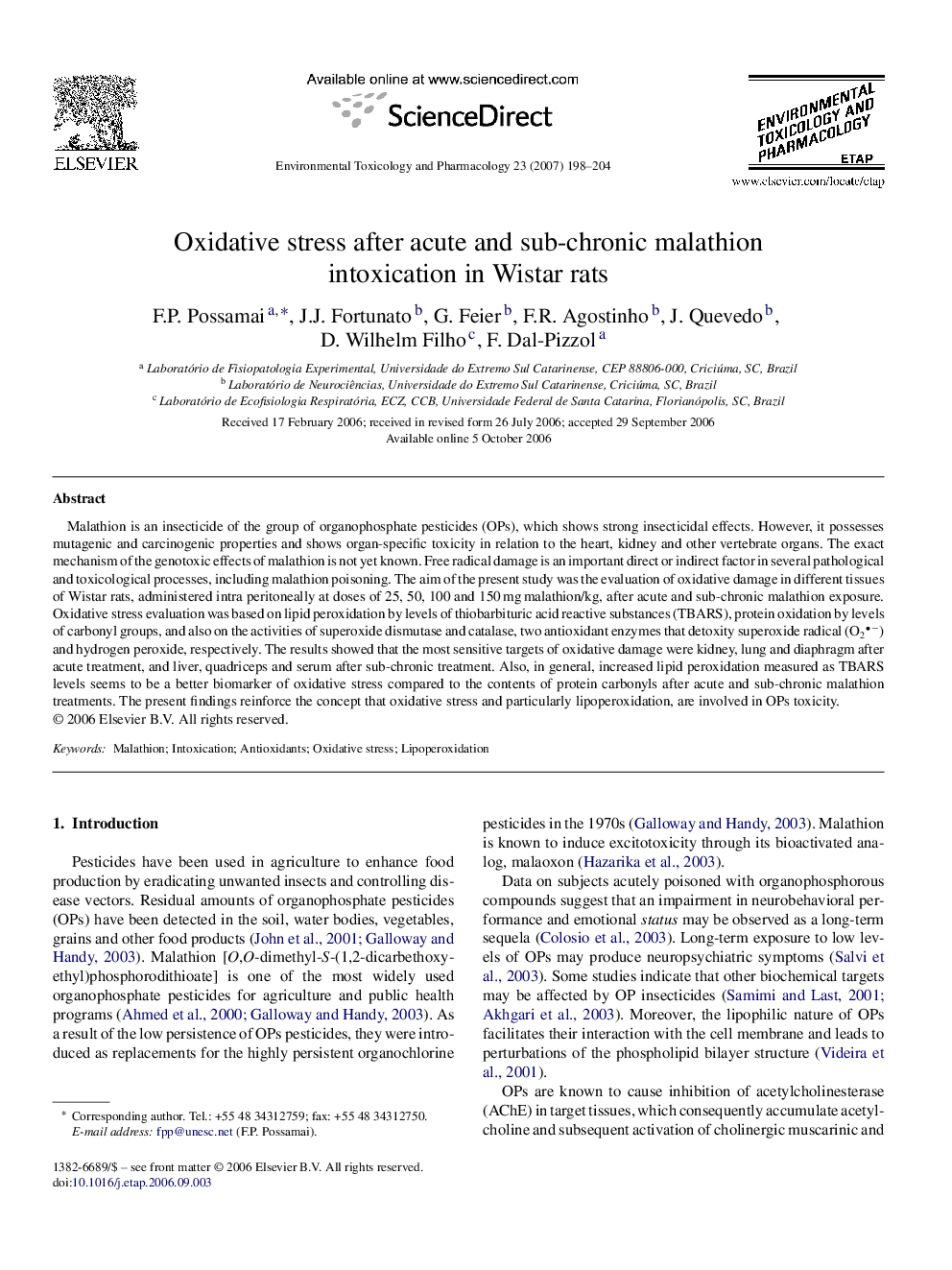| Article ID | Journal | Published Year | Pages | File Type |
|---|---|---|---|---|
| 2584572 | Environmental Toxicology and Pharmacology | 2007 | 7 Pages |
Malathion is an insecticide of the group of organophosphate pesticides (OPs), which shows strong insecticidal effects. However, it possesses mutagenic and carcinogenic properties and shows organ-specific toxicity in relation to the heart, kidney and other vertebrate organs. The exact mechanism of the genotoxic effects of malathion is not yet known. Free radical damage is an important direct or indirect factor in several pathological and toxicological processes, including malathion poisoning. The aim of the present study was the evaluation of oxidative damage in different tissues of Wistar rats, administered intra peritoneally at doses of 25, 50, 100 and 150 mg malathion/kg, after acute and sub-chronic malathion exposure. Oxidative stress evaluation was based on lipid peroxidation by levels of thiobarbituric acid reactive substances (TBARS), protein oxidation by levels of carbonyl groups, and also on the activities of superoxide dismutase and catalase, two antioxidant enzymes that detoxity superoxide radical (O2−) and hydrogen peroxide, respectively. The results showed that the most sensitive targets of oxidative damage were kidney, lung and diaphragm after acute treatment, and liver, quadriceps and serum after sub-chronic treatment. Also, in general, increased lipid peroxidation measured as TBARS levels seems to be a better biomarker of oxidative stress compared to the contents of protein carbonyls after acute and sub-chronic malathion treatments. The present findings reinforce the concept that oxidative stress and particularly lipoperoxidation, are involved in OPs toxicity.
